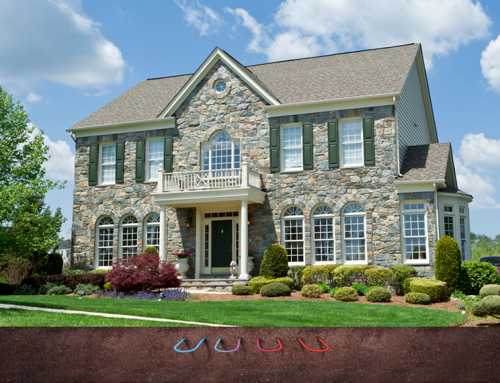As the population of the earth increases linearly, hydrocarbons are diminishing from the earth and our energy prices respectively are expected to increase linearly on a relative price basis (if priced based upon the Consumer Price Index). Geothermal systems have arisen as an efficient renewable energy source solution for saving energy. Heating and cooling technologies comprise approximately one-half of consumers’ energy bills and thus explain how Geothermal systems are gaining in popularity around the United States, Canada, and the rest of the industrialized world.
Our Federal government, Maryland’s state government, and several of Maryland’s local county governments foster Geothermal Heating & Cooling by offering Federal Tax Deductions, Maryland state grants, and local county property tax credits to eligible residential clients, respectively.
Have you ever wondered who invented this technology that extracts energy from inside planet Earth and utilizes it for massive heating and cooling efficiency gains? When do you think such a revolutionary technology was first introduced?
In this article, we will be answering all of your questions regarding the History of Geothermal Heating and Cooling Systems.
The Early Usage of Geothermal Systems
Historians have found that since Paleolithic times, humans have used hot springs for bathing and other purposes. Using geothermal springs to bathe and relax is a form of utilizing the Geothermal system, albeit, not a system for heating and cooling one’s home. The stone pool of 3rd century BC is the oldest known hot spring spa built by Qin dynasty in China. Since the birth of Jesus Christ, 0 AD, the water from hot springs began to be distributed to local houses and baths in Pompeii. Perhaps, Romans were the first to use Geothermal energy that emerged as hot springs for heating rooms and in public baths. The Romans were the first to commercialize Geothermal heating and cooling via conduits known as aqueducts.
After conquering Aquae Sulis (located in the modern-day United Kingdom), the Romans channeled the hot water to public baths. These public baths were not free. as they charged some amount as an entry fee for it. In Iceland, a recent discovery has been a more than one-thousand-year-old hot tub that was built by original natives. The earliest geothermal heating system is present in Chaudes-Aigues in South Central France.
The Evolution of Modern Geothermal Heating and Cooling Systems


The first heat pump was invented in the year 1852 by Lord Kelvin. However, it was Heinrich Zoelly (see photograph, right) in the year 1912 who made its use for drawing heat from inside of Earth. Heinrich Zoelly first patented the Geothermal Heating & Cooling System in 1912 via Swiss patent No. 59350.
Inventors of Modern Geothermal system
Perhaps, it was Robert C. Webber in the 1940s to first used his homemade 2.2 kW Geothermal pump as a direct exchange system. However, many sources deny this claim. The first commercial geothermal heating system got designed by J. Donald Kroeker in the year 1946. It heated the Commonwealth building located in Portland, Oregon. Later in 1948, Professor Carl Nielsen of Ohio State University invented the first residential open loop version of the Geothermal system. He invented it in his home. Due to the 1973 oil crisis, this technology took off in popularity in Sweden by storm. Afterward, geothermal heating and cooling gained global acceptance.
Present Scenario
Nowadays, there are millions of homes, factories, and offices equipped with Geothermal systems worldwide. According to a report, in the United States, there are around eighty thousand geothermal systems installed every year, while in Sweden, it is twenty-seven thousand geothermal systems annually.
Conclusion
The geothermal system is not new to mankind. Undoubtedly, it is a better alternative. In fact, it is an irony that the invention of the modern Geothermal pump came out to be so late. This solution of heating and cooling definitely will be acting as a game-changer in the near future. At least, the massive shift of population towards it indicates so.





























